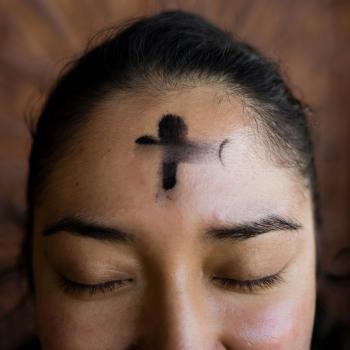Since I’ve been more transient than usual of late, I’ve experienced parish life and worship in a variety of settings within recent weeks and moths. And since I’ve been endowed with a critical mind that was hard enough to tone down even before seriously studying theology and liturgy, there is always something I end up mentally picking on – all the more so as my preferences fall on different sides of the “liturgy wars” that are hashed out in countless parishes, academic circles, and (of course) websites.
I could never have dreamed of being Catholic without Vatican II and am strongly partial to the Novus Ordo, but in pretty much a color-inside-the-lines kind of way, not in blind deference to rules for their own sake but in recognition of the way ritual speaks. If this sounds like an odd combination of leanings, what holds it together is the longing for familiarity, both in the sense of accessibility and of ritual environment. When we participate in the Eucharist, we enter into an inexhaustible mystery that is bigger than we know, and yet we need something recognizable to stand on if we dare approach it. Liturgy should be both a language we can grasp or at least begin to grasp when we come to it, and a language all its own, reinforced over time by enough repetition to take root and become a holy habit that cultivates other holy habits (namely the Christian virtues).
To illustrate what I have tried to articulate in the abstract, and recognizing the subjectivity of what follows in the concrete, here’s an idea of what my “ideal” Mass would look like if I had all my druthers.
- I want a sense of sacred space that catches my breath the moment I walk in the door, drawing me in to something bigger than me, in a way that is inviting rather than intimidating, yet nonetheless numinous.
- The whole Mass should begin and end with the sign of the cross, as a liturgical bracket signaling who we belong to and why we are doing all this. No blurring the bracket with a tangential mini-homily or a preemptive “good morning” or anything else; the only things that should precede and follow it (besides the dismissal) are the entrance and exit hymns.
- While I’m on the subject of music, I like the occasional chant proper and the occasional Haas/Haugen/Joncas (preferably the ones that sound more like hymns and less like showtunes), but mainly I hope for liturgically appropriate hymns with sturdy tunes and solid texts of both classic and contemporary authorship. I know four-part harmony would be asking too much for most Catholic parishes, but it’s nice to at least have a congregation that sings.
- Variables like the homily and intercessions should ideally reflect, in varying ways, emphases on Christian discipleship, social concerns, and the particular concerns of the parish community, engaging the lectionary readings as well as tying back to anything applicable on the liturgical calendar (such as the saint whose feast it is, although this shouldn’t completely displace the scripture).
- I’d rather not bother with grammatically awkward tap-dancing around all masculine pronouns.
- The celebrant should resist temptations to satisfy his theological hangups through liturgical improv. If you want to make a point, Father, save it for the homily. (Having said that, I do smile at certain subtle translation fixes, e.g. “for the many.”)
- Let’s please recite the Creed and the Our Father slowly and deliberately enough to hear what we’re saying, because this is serious stuff.
- Yes to kneeling during the Eucharistic Prayer, because we are the community at prayer.
- Yes to joining hands during the Our Father, because we are the community at prayer.
- Wafers are fine, but a loaf is even better. And please do give us the cup too.
- And if I happen to hear my favorite dismissal, that will be icing on the cake: “Go in peace, glorifying the Lord by your life.” And then, most importantly, let’s go out and do that.
Needless to say, I probably won’t ever find any one Mass that meets all of the above criteria. And ultimately I know that’s a good thing – as hard as this is to remember when I’m frowning at something or other that’s not to my liking – because it’s not about me. I can always make a case for my preferences, and while some of them may be more petty and insignificant than I like to think, much of my rationale would, I believe, be valid. I especially long for a strong sense of both reverence and community in one place, which underlies many of the particulars I have delineated here. And yet, however valid my concerns may be, I know I am not entitled to a made-to-order consumer product, because that is not what the Mass is. A liturgical theology professor of mine once said that being Catholic means living with what makes us uncomfortable, and maybe every liturgy is a reminder of this in one way or another. As much as I’ve enjoyed indulging in this little liturgical fantasy, in the end I must remember that what I can’t stomach may be someone else’s deep nourishment, and vice-versa; and that each of us must surrender some ego and make room for each other in the pew, as we come together to be what we cannot be by ourselves: the church catholic.











